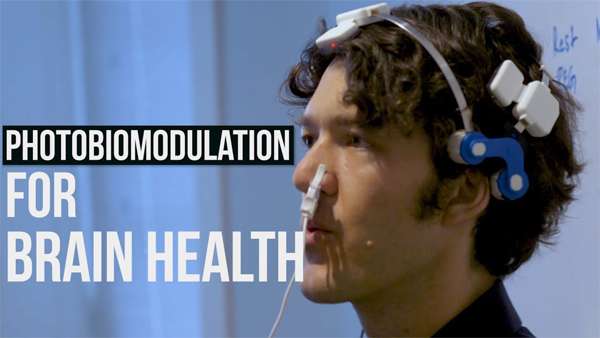What Physical Therapists Do
Physical therapists are movement experts who improve quality of life through prescribed exercise, hands-on care, and patient education.
Physical therapists diagnose and treat individuals of all ages, from newborns to people at the end of life. Many patients have injuries, disabilities, or other health conditions that need treatment. But PTs also care for people who simply want to become healthier and to prevent future problems.
Physical therapists examine each person and then develops a treatment plan to improve their ability to move, reduce or manage pain, restore function, and prevent disability.
Physical therapists can have a profound effect on people’s lives. They help people achieve fitness goals, regain or maintain their independence, and lead active lives.
Visit ChoosePT.com, APTA’s official consumer information website, to learn more about the benefits of physical therapy.
Where Physical Therapists Work
Physical therapists practice in a wide range of settings, including hospitals, outpatient clinics, people’s homes, schools, sports and fitness facilities, workplaces, and nursing homes.
How Much Physical Therapists Earn
The median salary for a physical therapist is $85,000. Salaries vary based on position, years of experience, degree of education, geographic location, and practice setting.
Demand for physical therapists varies by geographical region and area of practice, but PT unemployment rates are typically low across the country. The need for physical therapists is expected to remain strong as the United States population ages and the demand for physical therapist services grows.
Physical Therapist Education and Licensure
To practice as a physical therapist in the U.S., you must earn a doctor of physical therapy degree from a Commission on Accreditation in Physical Therapy Education-accredited physical therapist education program and pass a state licensure exam.
The length of professional DPT programs is typically three years. Primary content areas in the curriculum may include, but are not limited to, biology/anatomy, cellular histology, physiology, exercise physiology, biomechanics, kinesiology, neuroscience, pharmacology, pathology, behavioral sciences, communication, ethics/values, management sciences, finance, sociology, clinical reasoning, evidence-based practice, cardiovascular and pulmonary, endocrine and metabolic, and musculoskeletal.
Approximately 80% of the DPT curriculum is classroom (didactic) and lab study and the remaining 20% is dedicated to clinical education. PT students spend on average 27.5 weeks in their final clinical experience.
If you are an internationally educated PT or PTA, please read more information on internationally educated PTs and PTAs.
Getting Into a DPT Program
Most DPT programs require applicants to earn a bachelor’s degree prior to admission. Other programs offer a 3+3 curricular format in which three years of specific preprofessional (undergraduate/pre-PT) courses must be taken before the student can advance into a three-year professional DPT program.
A few programs offer freshman entry, recruiting students directly from high school into a guaranteed admissions program. High school students accepted into these programs can automatically advance into the professional phase of the DPT program, pending the completion of specific undergraduate courses and any other stated contingencies, e.g., minimum GPA.
The list of programs at PTCAS includes requirements for each programs.
Find a DPT Program
Choosing the Right Program
APTA does not rank DPT education programs. Programs are accredited by CAPTE, which assures quality in physical therapist education. Among the factors you should keep in mind when choosing your program:
- Cost and financial aid opportunities. Most DPT students graduate with student loans. Make sure you are financially aware and prepared. Programs offer different student experiences and have different costs.
- Program length. The traditional DPT program is three years, but some programs compress academic requirements into a shorter time span, which could help you manage the total cost of your education experience and enter the field faster.
- Demographics and setting. You will be investing a lot into your physical therapy education. Make sure that you select a program where you feel at home.
You may wish to contact current students and recent graduates of the program, or interview employers who hire new graduates, to ask about a program’s strengths and weaknesses.
Admissions
The Physical Therapist Centralized Application Service allows applicants to use a single web-based application and one set of materials to apply to multiple DPT programs.
Learn About the Admissions Process
After Graduation
Licensed physical therapists may choose to pursue a residency or fellowship program to enhance their knowledge and practice.
A clinical residency is designed to advance a physical therapist’s preparation as a provider of patient care services in a defined area of clinical practice. It combines opportunities for ongoing clinical supervision and mentoring with a theoretical basis for advanced practice and scientific inquiry.
A clinical fellowship is a planned program of postprofessional clinical and didactic education for a physical therapist who demonstrates clinical expertise in an area of clinical practice related to the practice focus of the fellowship. (Fellows are frequently postresidency prepared or board-certified clinical specialists.)
Physical therapists also have the opportunity to become board-certified clinical specialists through the American Board of Physical Therapy Specialties. Specialization is the process by which a physical therapist builds on a broad base of professional education and practice to develop a greater depth of knowledge and skills related to a particular area of practice. PTs are not required to be certified in order to practice in a specific area.
How to Become a Physical Therapist
About this section

Physical therapists use a variety of techniques, such as massage and stretching, to treat patients.
Physical therapists entering the occupation need a Doctor of Physical Therapy (DPT) degree. All states require physical therapists to be licensed.
Education
Physical therapists need a Doctor of Physical Therapy (DPT) degree from a program accredited by the Commission on Accreditation in Physical Therapy Education (CAPTE).
DPT programs typically last 3 years. Physical therapy programs typically require a bachelor’s degree, which may be in recreation and fitness or healthcare and related fields, and prerequisite courses such as anatomy, chemistry, and physics.
Most DPT programs require candidates to apply through the Physical Therapist Centralized Application Service (PTCAS).
Physical therapist programs often include courses in biomechanics, neuroscience, and pharmacology. Physical therapist students also complete clinical work, during which they gain supervised experience in areas such as acute care and orthopedic care.
Physical therapists may apply to a clinical residency program after graduation. Residencies typically last about 1 year and provide additional training and experience in specialty areas of care. Physical therapists who have completed a residency program may choose to specialize further by participating in a fellowship in an advanced clinical area. The American Board of Physical Therapy Residency and Fellowship Education has directories of physical therapist residency and fellowship programs.
Licenses, Certifications, and Registrations
All states require physical therapists to be licensed, which includes passing the National Physical Therapy Examination administered by the Federation of State Boards of Physical Therapy. Other requirements vary by state. For example, some states also require a law exam and a criminal background check. Continuing education is typically required for physical therapists to keep their license. Check with your state board for specific licensing requirements.
After gaining work experience, some physical therapists choose to become a board-certified specialist. The American Board of Physical Therapy Specialties offers certification in clinical specialty areas of physical therapy, such as orthopedics, sports, and geriatrics. Board specialist certification requires passing an exam and completing clinical work in the specialty area.
Important Qualities
Communication skills. Physical therapists must clearly explain treatment programs, motivate patients, and listen to patients’ concerns in order to provide effective therapy.
Compassion. Physical therapists spend a lot of time interacting with patients, so they should have a desire to help people. They work with people who are in pain and must have empathy for their patients.
Detail oriented. Like other healthcare providers, physical therapists should have strong analytic and observational skills to diagnose a patient’s problem, evaluate treatments, and provide safe, effective care.
Dexterity. Physical therapists must use their hands to provide manual therapy and therapeutic exercises. They should feel comfortable massaging and otherwise physically assisting patients.
Physical stamina. Physical therapists spend much of their time on their feet, moving to demonstrate proper techniques and to help patients perform exercises. They should enjoy physical activity.
Resourcefulness. Physical therapists customize treatment plans for patients. They must be flexible and adapt plans of care to meet the needs of each patient.
Time-management skills. Physical therapists typically treat several patients each day. They must be able to provide appropriate care to patients as well as complete administrative tasks, such as documenting patient progress.
thebestschools.org is an advertising-supported site. Featured or trusted partner programs and all school search, finder, or match results are for schools that compensate us. This compensation does not influence our school rankings, resource guides, or other editorially-independent information published on this site.
How to Become a Physical Therapist
Physical therapists help athletes recover from injuries, treat patients with chronic back pain, and specialize in rehabilitation. A key part of the healthcare system, physical therapists benefit from high demand. The field reports median salaries more than double the median for all occupations and much-faster-than-average job growth.
In every state, physical therapists must meet education and training requirements to practice. Our guide covers how to become a physical therapist, including education requirements, common specializations, and licensure requirements. Prospective physical therapists can use these resources to learn more about the career path.
Questions About Physical Therapy
How long does it take to become a physical therapist?
Physical therapists must complete a three-year doctoral program to qualify for a license. Some schools offer a 3+3 accelerated program. In them, students spend three years earning an undergraduate degree before directly entering the doctoral program.
Is a physical therapist a doctor?
Yes, physical therapists are doctors. They complete a doctorate as part of their training. However, physical therapists do not attend medical school. Instead, they train in doctor of physical therapy (DPT) programs.
What is the difference between a chiropractor and a physical therapist?
Chiropractors focus on the nervous system and correct related pain. Physical therapists specialize in many body systems, including the musculoskeletal system. They emphasize stretching and exercises to build strength.
Do physical therapists make a lot of money?
According to the Bureau of Labor Statistics (BLS), the median annual physical therapist salary is $91,010. That exceeds the median salary for healthcare practitioners of $69,870.
What Do Physical Therapists Do?
Physical therapists count themselves among many different types of therapists in the healthcare field. They treat patients recovering from an injury or surgery. Physical therapists provide preventative treatments and help patients with chronic illnesses.
When meeting with a new patient, physical therapists review their medical history and diagnose their needs. Then, physical therapists design a treatment plan. They work closely with patients to demonstrate therapeutic techniques and equipment that increase mobility and decrease pain.
Physical therapists educate patients on their recovery and modify care plans based on progress. They often specialize in areas like orthopedics, geriatrics, or sports physical therapy. Physical therapists work in physical therapy offices, hospitals, home healthcare services, and residential care facilities.
Physical therapist jobs require strong communication skills, compassion, and patience. Physical therapists lift and adjust patients, so they need physical stamina and fitness as well. The career often means long hours standing and working closely with patients.
What Are the Education Requirements for Physical Therapy?
Students who want to become a physical therapist need to understand the education requirements for physical therapist jobs. Recently, the field increased those requirements. Physical therapists once only needed a bachelor’s or master’s, but now the field requires a doctorate. This section walks through the degrees you’ll need to become a physical therapist.
-
Associate Degree
An associate degree prepares graduates for careers as a physical therapist assistant. During an associate program, students learn about human anatomy, physiology, and kinesiology. They take classes in biology and math. Programs incorporate clinical training to strengthen career-ready skills.
Learners who complete an accredited physical therapist assistant program can apply for a physical therapist assistant license or certification. A two-year associate degree in any subject prepares students to transfer into a bachelor’s program. Associate degree-holders can transfer to a four-year institution and earn a bachelor’s in about two years.
-
Bachelor’s Degree
A bachelor’s degree prepares prospective physical therapists for graduate-level training. What majors should prospective physical therapists consider? Common physical therapist majors include biology, kinesiology, psychology, and exercise science.
These majors often meet the prerequisite course requirements for graduate programs. Most DPT programs require courses in anatomy, physiology, biology, chemistry, physics, psychology, and statistics. Future physical therapists major in all fields, including humanities, healthcare, or social service. However, they will need to meet the prerequisites to gain admission to a graduate program.
Earning a bachelor’s degree generally takes four years for full-time students. The cost varies depending on the school. Undergraduates spend $9,350-$32,770 in tuition and fees, according to 2019-20 National Center for Education Statistics data.
-
Master’s Degree
In the past, physical therapists qualified for licensure with a master’s degree. Today, they need a doctorate. Does it make sense to earn a master’s degree to become a physical therapist?
Some students benefit from a master’s degree. A master’s program may help undergraduates with a low GPA or those who need to meet prerequisites. Since most physical therapy programs no longer offer a master’s, a degree in kinesiology or occupational therapy can help DPT applicants stand out.
Most master’s programs take two years. The cost of a master’s degree varies, with most programs costing $30,000-$120,000.
-
Doctorate Degree
Physical therapists need a doctorate to get their license and practice. Most physical therapy doctoral programs take three years. During that time, doctoral students complete coursework in anatomy, physiology, biomechanics, and kinesiology. Programs incorporate training in the behavioral sciences, evidence-based practice, and multiple body systems.
Besides classroom training, doctoral students complete a clinical education component. The 25-30 weeks of clinical training prepare physical therapy graduates for residencies and physical therapist jobs.
DPT program costs vary. In general, public universities with in-state tuition discounts cost less than private institutions. Some programs offer accelerated or part-time enrollment options.
Physical Therapy Specializations
During a physical therapy doctoral program, graduate students choose a specialization to focus their training. After completing a doctorate, physical therapists can pursue board certification as a clinical specialist in 10 specialty areas.
The American Board of Physical Therapy Specialties (ABPTS) offers board certification in geriatrics, orthopedics, and pediatrics. They also certify physical therapists specializing in cardiovascular and pulmonary issues, oncology, sports physical therapy, and women’s health.
This section introduces the requirements for three popular physical therapy specializations. Degree-seekers wanting to become a physical therapist can research programs offering concentrations in their desired area. Then, with a doctorate, they can earn board certification as a clinical specialist.
-
Orthopedic Clinical Specialist
Orthopedic physical therapists treat injuries to patients’ bones, muscles, and joints. The specialty requires coursework in orthopedic injuries and musculoskeletal disorders. Enrollees learn about conditions like arthritis that affect the skeletal system, as well as injuries and surgical procedures that require physical therapy.
Board certification requires 2,000 hours of direct patient care in orthopedics. Candidates must complete an orthopedic residency with an accredited institution.
-
Geriatric Clinical Specialist
A geriatrics specialization focuses on aging patients who require physical therapy. To prepare for physical therapist jobs in this specialty, students learn about age-related musculoskeletal disorders, including arthritis and osteoporosis. They also learn about neurological disorders that affect physical health. Doctoral candidates gain hands-on experience through clinical practicums.
After completing a doctorate with training in geriatrics, physical therapists must meet two requirements for board certification. Candidates need 2,000 hours of patient care in geriatrics and an accredited geriatrics residency.
-
Pediatric Clinical Specialist
Physical therapists specializing in pediatrics work with children and adolescents. They focus on physical injuries and disorders that affect young people from birth through their teenage years. During a doctoral program, a pediatric concentration covers conditions that pediatric physical therapists treat, like cerebral palsy. Doctoral candidates complete clinical hours in pediatric care settings.
Professionals qualify for pediatric clinical specialist board certification with a doctorate, accredited pediatrics residency, and 2,000 pediatric patient care hours.
Career and Salary Outlook for Physical Therapy
Physical therapists benefit from a strong career and salary outlook. Salaries vary depending on location, experience, and industry. The top-paid physical therapists earn a median salary over $126,500 per year.
Some industries report a higher physical therapist salary than others. Nursing and residential care facilities report the highest median pay, followed by home healthcare services, hospitals, and physical therapist offices.
Location also affects earning potential. The five states with the highest mean physical therapist salary are Nevada, California, Alaska, New Jersey, and Connecticut. In these states, physical therapists report mean salaries over $100,000 per year.
In addition to high earnings, the field reports a strong job outlook. The BLS projects 49,100 added physical therapist jobs from 2020-2030, representing 21% projected job growth. This qualifies as much-faster-than-average growth.
Certifications and Licensure for Physical Therapists
In every state, physical therapists need a license to practice. Requirements vary by state, but include a doctorate from an accredited program. Candidates must pass the National Physical Therapy Examination, which tests their knowledge in many areas of physical therapy.
Physical therapists pursuing licensure in some states must pass a jurisprudence exam.Other requirements may include a criminal background check. The Federation of State Boards of Physical Therapy provides contact information for each state’s licensing body. It also offers information on the exam requirements for licensure.
With a state-issued license, professionals qualify to apply for physical therapist jobs. They can also pursue board certification in a specialty area through ABPTS. Board certification requires a residency and clinical patient care hours.
Ask an Expert

Lea Klein
Lea Klein graduated from St. Louis University with a bachelor’s in exercise science in 2000 and received her master of science in physical therapy in 2001. She began by working in outpatient care, treating orthopedic impairments. During her almost 20-year career, Klein became passionate about treating pregnant and postpartum patients and decided to go through training to treat pelvic floor disorders in 2007.
She now specializes in pelvic floor physical therapy. In 2017, after having her third child, she decided to take the leap and start her own private business, Klein Physical Therapy. Klein always wanted to deliver the highest quality care and felt that one-hour sessions allowed for quicker progress. Her practice continues to grow steadily.
Q. What Are Some Challenges and High Points in This Role?
I feel like the highest points of being a physical therapist (PT) are the times when you have made tremendous progress with a patient and truly changed their current life. There is nothing better than hearing that they are no longer experiencing the debilitating pain they had been experiencing or that they could resume their exercise routine without pain.
The challenges in this role are the limits that insurance companies place on quality care. Another challenge is breaking the stereotype of what a PT does. Our profession has grown tremendously, and many still don’t know about all the benefits of seeing a PT. My specialty of pelvic floor physical therapy is still not well known.
Q. What Type of Person Does Well in This Role?
There are many different settings for a physical therapist to explore. Being a neurophysical therapist treating patients with traumatic brain injury, for instance, is very different than being an outpatient orthopedic therapist. The common characteristic in all specialties is being a caregiver. You have to like working closely with people, and it’s a plus if you’re an analytical thinker who likes to problem solve.
Q. Who Does This Role Help? How Does This Role Affect Others?
This role helps a tremendous amount of people. It really helps anyone struggling with physical impairments. In the neuro world, you are helping stroke patients, Parkinson’s patients, patients with closed head or spinal cord injuries, and many others. In the ortho world, you are helping post-surgical patients, such as those recovering from a total knee replacement or rotator cuff repair. The patient with debilitating low back pain and the postpartum mom struggling with urinary incontinence and sciatica are all examples of those helped by physical therapy.
Q. Why Do We Need More Physical Therapists?
Physical therapy is a crucial profession. As baby boomers get older and the weekend warriors continue to injure themselves, we continue to need more physical therapists.
Q. How Long Does It Usually Take Graduates With a Degree to Get Hired?
Most graduates who have prepared themselves can get hired immediately after graduation. My first job was with the company that I had one of my clinicals with. I secured the job before I even passed the boards (barring that I passed, of course).
Q. How Much Does a Certification Specialty Affect Your Hireability?
As a new grad, it is not necessary to have a certification specialty to be hired. My personal advice is to stay focused during your schooling on which area of PT you’d like to practice in. Make sure you sign up for a variety of clinical settings and then go for your favorite setting when you graduate.
As you begin to work in that setting, then strive to specialize in something more specific. A specialty is likely going to make you a more desirable candidate when applying for positions.
Q. What Skills Do Employers Look For?
I believe employers are looking for therapists who are good communicators and those who are teachable. One must show the ability to perform critical thinking. If you have an openness to learn and you are confident without being arrogant, you will shine in an employer’s eyes.
Q. What Can Students Do to Make Themselves Look Better to Employers?
Students will always look better if they demonstrate that they are truly invested in their profession. Taking the time to volunteer within the profession and having strong personal and professional goals for growth are ways to stand out.
Resources for Physical Therapy
A professional association founded in 1921, APTA represents 100,000 physical therapists, assistants, and students. The organization provides career planning, patient care, and practice resources. ACAPT represents academic physical therapy programs. Its members include over 95% of accredited U.S. physical therapy programs. The council provides education research, clinical training resources, and a national honor society for students. An open-access journal, Physical Therapy and Rehabilitation publishes research covering every subfield of physical therapy. Students can read articles or submit manuscripts to the journal. CAPTE grants accreditation to physical therapy programs, including physical therapist assistant programs. Physical therapists must attend a CAPTE-accredited program to qualify for a license.
Header Image Credit: Erik Isakson | Getty Images



